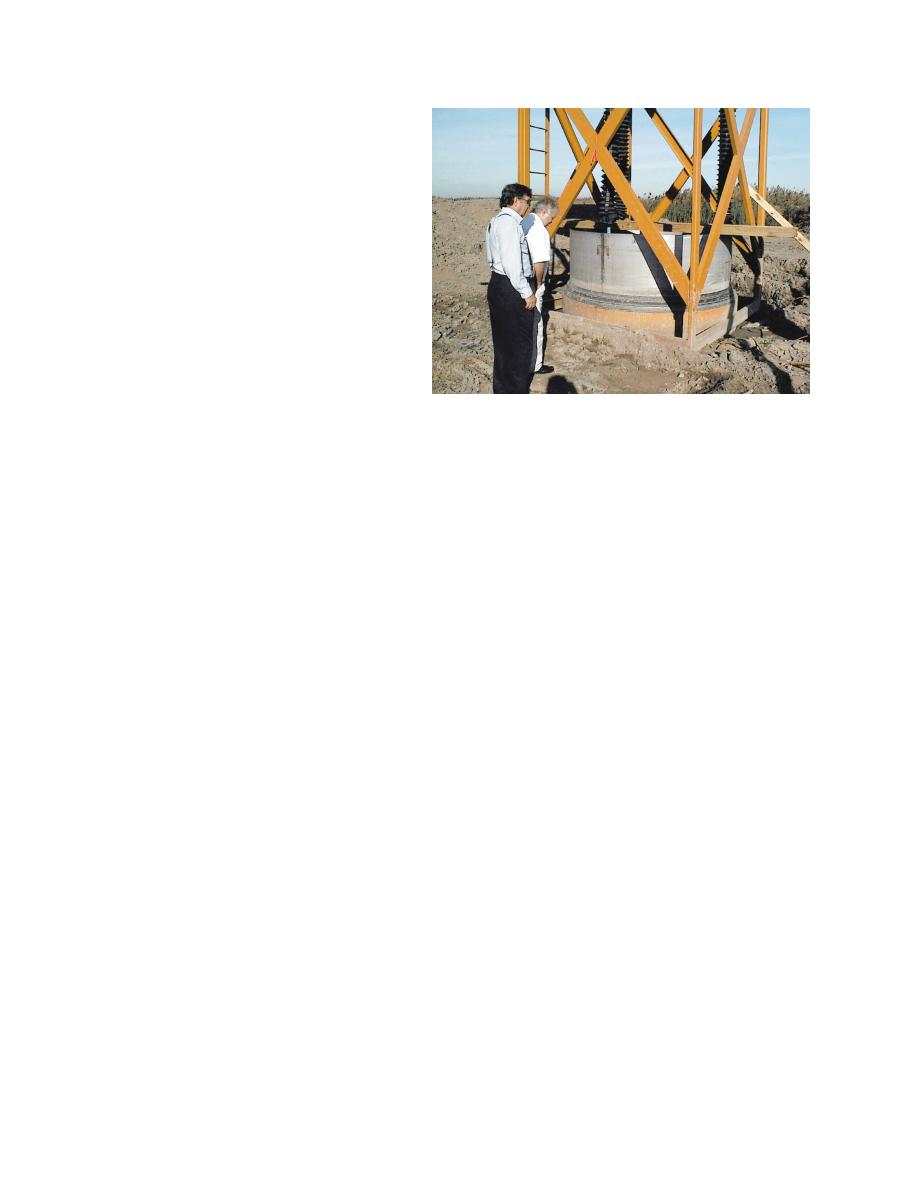 |
||
|
|
||
|
Page Title:
INNOVATION WITHIN THE CORPS (cont.) |
||
| |||||||||||||||
|
|
 below the water surface, the decant water
flows over the weir crest into the interior
sections, exits through the discharge pipe
in the lower section, and returns to the
surface water course outside the CDF.
This weir has numerous advantages. The
principal advantage is that it provides an
infinite elevation adjustment of the weir
crest (within the weir design height) and
discharge velocities at the touch of a but-
ton. The crest of the telescoping weir can
be lowered easily to the bottom of the
desiccation cracks in the dredged material.
This flexibility also provides efficient con-
trol of surface runoff, enhancement of the
desiccation and the drying processes, and
some measure of mosquito control. The
telescoping weir reduces labor requirements and costs through the elimination of weir board
handling, weir board replacement, weir maintenance, and possible weir failure. The weir promotes
safer field operations, which is another significant advantage. It can be equipped with a variety of
sensors to measure effluent turbidity, temperature, pH, and oxygen levels. Most significantly, this
innovative technology offers a new standard in an area of dredging management that has been very
difficult to improve upon for many years.
To date, three full-size telescoping weirs have been installed at the Craney Island CDF in Norfolk,
VA. The first prototype telescoping weir was installed in April 1996, the second was installed in
June 1998, and the third was installed in April 1999. The first weir performed so well, along with
two conventional weirs, that the Norfolk District was able to accommodate a record annual
placement of 6 million cubic yards of maintenance dredged material. Efficient performance of the
telescoping weir eliminated the usual temporary shutdowns of two very large dredging projects.
The first two weirs are operational and have required virtually no maintenance to date.
Presently, the Norfolk District is assisting the U.S. Army Engineer District, Mobile, with design
and installation of their first telescoping weir. This work should be completed in early 2000. The
innovative device has high potential to be used throughout the Corps and other industrial facilities
worldwide. Patents for the telescoping weir are pending with the U.S. Patent Agency and foreign
countries.
The Innovative Technology Focus Area under DOER is partnering with the Norfolk District to
transfer the technology to various Corps users, including the Mobile District. This partnership serves
to promote the use of and will aid in the technology transfer to other Corps Districts. In addition to
the technical assistance provided under DOER, the U.S. Army Engineer Research and Development
Center, Environmental Laboratory, has signed an agreement with the Norfolk District to license the
telescoping weir to commercial entities. It is expected that the telescoping weir will be fully licensed
to commercial vendors by mid-2000.
|
|
Privacy Statement - Press Release - Copyright Information. - Contact Us - Support Integrated Publishing |